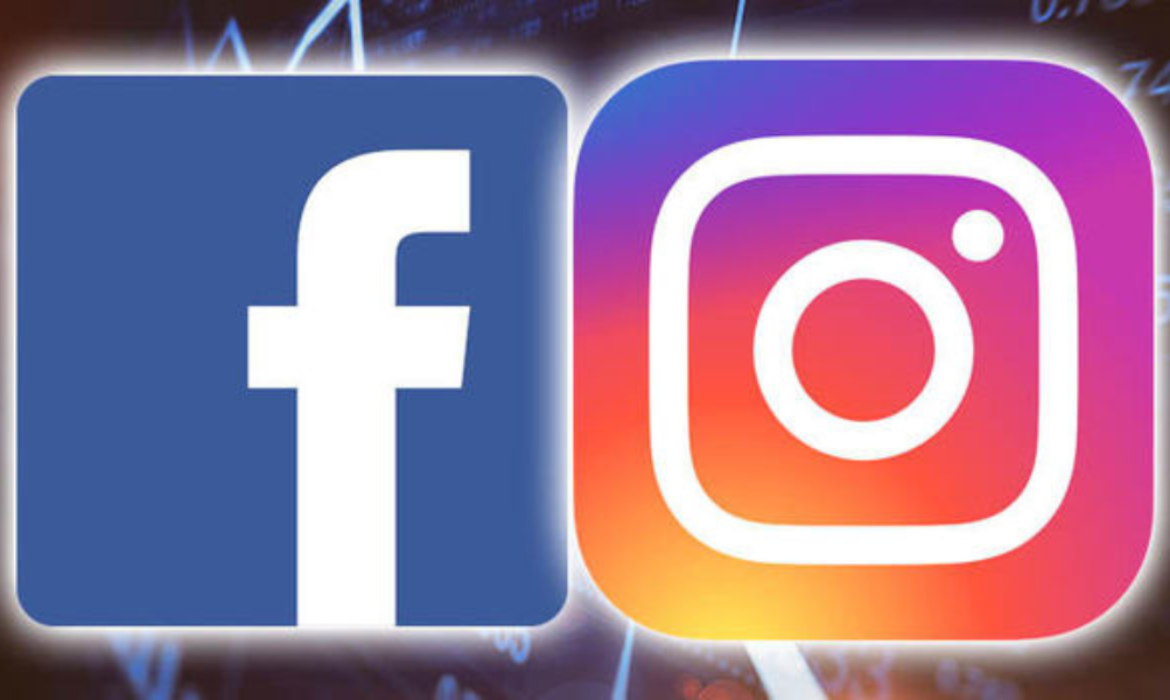Facebook Debuts Shops In Its Mobile App, Instagram Expands Checkout Feature

Facebook rolled out a shopping section ‘Facebook Shops’ to its main app across the U.S and expanded Instagram’s checkout feature.
The new section Facebook Shops allows users to browse product catalogs from businesses they like, discover new businesses and make purchases, all-in-one place, and without leaving the app. A similar feature ‘ Instagram Shops’ was introduced on its photo-sharing app last month.
The news follows the launch of Facebook Shops in May and on Tuesday it announced a couple of new e-commerce features within its flagship mobile app and Instagram. Businesses were already able to add product catalogs to their Facebook pages but there was no dedicated section inside the app for browsing the selections.
The company explained the rapid shift toward online shopping as a reason to foray into eCommerce.
“During the COVID-19 pandemic, the shift to online shopping has rapidly accelerated, with an estimated 85% of people worldwide now shopping online.
We want to make shopping easier for people and empower anyone, from an entrepreneur to the largest brand, to use our apps to connect with customers and grow their business.”
Here are the details that will help people to shop on the apps and tools to help businesses sell online.
Shop Till You Drop!
A new ‘Shop’ tab is introduced in the mobile app where businesses can showcase their products and customers can shop them in the app.
“Facebook Shop makes it easy for people to find products from businesses they love, discover new ones and make purchases, all in one place.”
It’s a significant step for Facebook’s eCommerce push, helping users to browse and purchase from shop-enabled Pages directly in the app. Presently, being tested in the US but Facebook said in the coming weeks it will be available to all eligible businesses.

New customization features will also be added to Facebook Shops that includes:
- New design layouts for featuring single products or groups of products in Shops
- Real-time preview of collections as they are designed
- The ability to automatically create Shops for new sellers
- New insights to measure results in Commerce Manager

Expanding Instagram CheckOut
Checkout allows users to pay for items directly inside the app and will soon be available to all businesses in the U.S after keeping the feature exclusive to certain partners for almost 18 months. Though there is a limitation,
To use checkout, businesses must have Shops and use Facebook Commerce Manager or our partners Shopify and BigCommerce. We’ll support more platform partners soon.
It will also provide an incentive by waiving the selling fees for businesses through the end of the year due to the current economic crisis.
Shop Using Messaging
Facebook added a new message option to the shop in order to connect the customers directly to the seller through Messenger, WhatsApp, or Instagram Direct.
“Messaging through Shops combines the in-store experience of being able to ask a salesperson questions with the convenience of online shopping.”

Customers can view the products in the chat and can easily share with friends and family for feedback before any purchase. This feature is now being tested on Messenger and Instagram Direct and will start testing on WhatsApp soon.

This will definitely boost Facebook’s dominant presence in messaging with its eCommerce capacity, providing compelling business opportunities as people are regular users of these messaging apps.
Live Facebook and Instagram Shopping
Another promotional option is Facebook and Instagram live shopping. This means businesses can sell products during a live stream.
“Facebook Live Shopping includes new features to help businesses easily set up a live experience featuring products from their Shop and sell directly from the video.”
Instagram Live Shopping is available to all businesses and creators using checkout in the US.

Video is the most engaging type of content and during the lockdown during the pandemic, the viewership of Facebook live streams had risen 50% since January as people looked for various ways to stay connected and entertained.
The global lockdown has provided a significant opportunity to Facebook’s eCommerce business as more people shifted to online shopping. The social network will soon become an essential part of our day-to-day lives as it prepares to build a commerce eco-system within its own network.
Exit Lockdown. Enter Reality – What Comes Next?
10 weeks. 70 days. 1680 hours. Far too many Netflix binges to mention. Meaningless stats at any other time, but in the context of the coronavirus, it’s a stark reminder of our time in lockdown. It’s strange to think that we’ve spent over two months in self-isolation, practising social distancing and learning how to re-interact with everyone around us.
Businesses have moved online, companies have shifted their models, employees have become tech evangelists quicker than anyone would have anticipated. In essence, we’ve been living a do or die mentality during this pandemic, so now that economies around the globe are beginning to open up, what comes next?
I could put my Nostradamus hat on again and make a load of predictions, but really, what’s the point in that? No-one knows what lies ahead, the situation is changing too quickly, with multiple factors at play and an unpredictable virus that doesn’t want to play by society’s rules. The only thing we can be certain of right now is uncertainty, as annoying as that is to admit. We can’t control the environment in which we operate, but we can look at what’s happening to use as a barometer for the trends currently shaping our industry.
The Golden Ecommerce Opportunity
“While the world falls apart, the stock market – and especially Ad Tech – keeps on pumping”. Considering the ripple effect that has been felt throughout every sector, at first glance, this may seem like a stretch, however, the sentiment on Wall Street surrounding digital media, and by extension, Ad Tech is undeniably positive.
Facebook reported flat revenue year over year in April, not usually a cause for celebration, but amid nationwide lockdowns, investors are confident in the platform’s ability to rebound. Similarly, Google and Snapchat beat analysts’ expectations, however, a tougher Q2 is expected. It’s a realistic snapshot of the peaks and troughs that have become commonplace during the pandemic, and as consumer behavior patterns continue to change, the major walled gardens will find new and more innovative ways to gain market share.
You only need to look at how the duopoly has applied itself during the crisis. Gold stars all around. Announcements from Facebook have come thick and fast over the past few weeks, with everything from their Giphy acquisition to the launch of Messenger Rooms and its sister app, CatchUp for video calls, creating a buzz. And amid the fluff – their Bitmoji-inspired Avatar app is a prime example – came what we were all waiting for: a real and very viable move into online commerce.
Facebook ‘Shops’ will allow small businesses to build online stores on both Facebook and Instagram, and in the future, will extend this feature to its Instagram Direct, WhatsApp, and Messenger platforms. Products can also be tagged during live broadcasts, and if Zuckerberg’s estimations are accurate, with some 800 million people already engaging in live video sessions daily across Facebook and Instagram, the opportunity here is huge.
According to Deutsche Bank’s Lloyd Walmsley, Shops has the potential to drive as much as $30 billion in incremental revenue – the bulk coming through further advertising opportunities. This makes sense when you consider Facebook’s rationale in enabling eCommerce across all of its platforms in this way; the closer the consumers are to checkout, the more willing advertisers are to spend. That’s probably why Bezos is laughing all the way to the bank as Amazon’s ad business continues to skyrocket. Of course, Amazon isn’t immune to the fallout either. Investors were told in no uncertain terms to ‘take a seat’ during the Q1 earnings report, amid challenging trading conditions, a pullback from some advertisers, and pressure on price. Still, with a reported 44% growth in Q1 and continuing strong traffic to the site, Amazon will be a thorn in the duopoly’s side for a long time yet. Google, much like Facebook, is looking to guard against this Amazonian invasion. The platform recently added organic listings to its Shopping site, offering retailers exposure to millions of daily shopping searches, while users will have access to a wider range of purchase options. On the surface, it’s likely to gain Google’s market share and advertising dollars over time and has the added bonus of taking aim at Amazon’s convenience model by competing on variety.
Even ‘smaller’ companies are looking to get into the retail game. Criteo continued its move away from retargeting, launching a self-serve ad platform for its retail media network. It’s particularly shrewd given how valuable retail media is right now. As eCommerce continues to surge in lockdown, traditional media budgets are being funneled this way to capitalize on the opportunity in real-time. The ‘Always On’ Mentality at the outset of the coronavirus, programmatic was one of the first to be hit. Brands paused their online campaigns; the default ‘easy’ option, as opposed to reviewing their other marketing channels. However, programmatic has proved to be adaptable, resilient, and flexible in the wake of continued challenges and pressures. It is already rebounding, and I believe digital and eCommerce will take an even larger share of overall advertising in the long run.
Still, even prior to this, publishers were being cautious with their investments and not capitalizing on the programmatic opportunity quickly enough. Of course, change has now been forced at every level. Digitization is a requirement and businesses no longer have the luxury of waiting things out. The nature of operating in 2020 is that you have to be ‘always on’. Adapt. Review. Adapt. Review. There’s no room for complacency.
For my part, I’d say on balance, I’m a pretty optimistic person. Look for the opportunity, acknowledge the risk, but be ready to take action, and that hasn’t changed in the past three months. What we’ll all need to be careful of as things begin to move again is abandoning the ‘critical change’ mindset we have adopted as standard during the pandemic.
Jeff Bezos “Day 2 is stasis. Followed by irrelevance. Followed by excruciating, painful decline. Followed by death. And that is why it is always Day 1.”
It’s probably more morbid than I would have put it, but he has a point. No more stasis. Let’s make every day count.

Ayman Haider
CEO at MMP World Wide – Board Member at IAB MENA
Wassim Mneimneh is a CEO at MMP Worldwide and a board member at IAB MENA. A dedication of a lifetime to career in advertising with a passion for tech, and focus on driving the transformation, implementation, and conversation on the value of programmatic and its ability to rebuild trust and safety for the media industry.
11 Global Brands Create Epic Ads Entirely From Home During Covid-19.
Just weeks into global lockdown, advertising production has changed. It is now confined to homes with shoots canceled or postponed for the foreseeable future. Out of adversity, now comes creativity as advertisers are overcoming the hurdle of not being able to venture out with ads made remotely or entirely from home.
Video advertising isn’t stopped amidst the pandemic but is showcasing creativity in lockdown.
We have handpicked the best ads produced remotely in the COVID- era from around the world.
1. Apple: Creativity goes on
Apple is one of the top names of all brands creating ads from home. The tech giant has captured how consumers are creative amid the COVID outbreak and are using its products for drawing pictures on the iPad, produce video content on Macbook or Facetime with near ones. The film is produced in over two weeks starring many celebrities from their homes and ends with a line reading “Creativity Goes On.”
2. Women’s Aid: The Lockdown by Engine
Engine and Knucklehead created a campaign ‘The Lockdown’ – uses video shot during the daily excursions in London to capture the empty roads and emphasize that domestic abusers are no longer on the streets and are locked inside with their families. Women’s aid has set up a coronavirus advice page to help victims of domestic abuse.
3. IKEA: Making Home Count
An absolute delight to watch the video advertisement and beautiful creative ad in coronavirus outbreak. Ikea Singapore released ‘Making Home Content’ – a short ad made remotely by a team of creatives from TBWA to give thanks to those abiding the lockdown rules. It covers simple ‘joys’ like pets, cooking, and playtime with children and family, using the footage shot by the team who captured their lockdown lives.
4. Vodafone Italy: Importance of Connectivity
Vodafone Italy launched an ad campaign made remotely by the crew to demonstrate the importance of connectivity and raise funds for the Italian Red Cross during the pandemic. The ad features the strapline “Even when we can’t be close, we can be together”.
5.Honda Civic: #StayHome
The 35-second spot is the latest video ad made from home entirely for the Dubai region with Memac Ogilvy Dubai. A classic example of creative video advertising where it started like any other sheet metal commercial but with a twist. Honda uses a full-scale miniature car and the camera shots managed to trick the viewers for some time and feel like watching a real car. The ad ended on a hopeful note reading” Until we drive again” with the hashtag #Stayhome.
6.Porsche: Let it Not Tempt you
Another automobile ads made remotely is Porsche for Poland which created a film overnight with a series of graphics to encourage viewers to stay home despite the beautiful weather. It inspires Porsche owners to share photos of the parked cars on social media and comply with safety recommendations.
7.Nike: Play for the World
Next on ads made remotely is Nike’s inspiring campaign where it is paying a tribute to all the athletes who are training indoors due to quarantine.
8. Birds Eye: So, What’s For Tea?
This creative video advertising ad was made to help families cope with the coronavirus crisis presenting life hacks like entertaining families that include coloring pages and word searches. Families can download the life hacks on the brand’s website or social media page.
9.Ad Council: #StayHome, Save Lives
The Ad Council has joined hands with Google, the ANA, and other advertising, media, marketing trade associations, on a wide movement that pleads to the people of America to #StayHome Save Lives in order to slow the spread of coronavirus.
10. The BMW: Contactless Experience
The highly affected sector due to these unprecedented times is automotive. A unique and creative corona ad introduces the BMW India Contactless experience with a digital-purchase experience that gives the feel and benefits of a brick and mortar dealership at a click of a button and from the comfort of the home.
11. Audi: The Drive
Audi is offering a pleasant and innovative experience to house-bound Australians through the freedom of open roads. Audi Australia created a 4 hour long long-slow TV film, a masterpiece of creativity in lockdown for the viewers to experience the soothing nature of the road trip from the comfort of their home.
The creative ads in coronavirus pandemic show that it has not put a damper on the creativity of the people and will inspire audiences to StayHome, StaySafe to win over these tough times.




